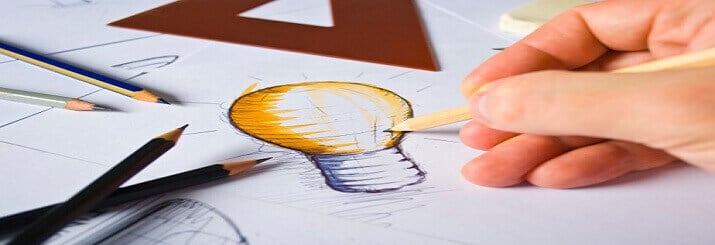Every website, brochure, product packaging, or other type of marketing collateral consists of two essential elements: content and design. Each of these plays a critical role in effectively communicating your brand message. Without an appealing design, great content loses much of its impact. Lacking meaningful content, a great design may wow the viewer but fail to motivate them to take action.
Small to middle-market companies are often willing and able to produce their own content. But few have the in-house expertise or resources to perform the graphical design function. When the need arises, they typically turn to a freelancer or a graphic design agency.
If you’re in the market for graphic design services, here are some tips for selecting the right designer for your needs and working with them for a successful design project.
Hire the right designer. Look for someone who has experience in whatever you want designed. For example, if you’re redesigning your web site, it wouldn’t make sense to hire someone who specializes in package or environmental design. In addition to skills and experience, look for compatibility. Whenever possible, meet in person to get a sense of the designer’s personality and how you will work together.
Inform the designer about your business. Before getting into the specifics of the project, offer some background on your company. Provide a succinct explanation of your business model and/or unique value proposition. Outline your marketing objectives. Then give a clear definition of your target audience and why they would be interested in your product, service or business. The more the designer understands who you are, who you serve, and what you need, the better the end product will be.
Outline your primary communication objectives. Give the designer some basic guidelines about the look and feel of the project. Don’t worry about spelling out exactly what you want the design to look like. A good designer will have the talent to take your rough ideas and come up with a professional design that represents your company in an appropriate manner. Be sure to provide the designer with examples of other designs you like—whether the design belongs to your industry or not. As much as you can, explain to the designer what appeals to you about the samples.
Set clear project objectives. As with any project, set clear goals for what you want to accomplish. Discuss the project in depth with the designer, and get agreement on who is responsible for what, and by when. To keep things on track, set deadlines for each phase of the project, but build in some flexibility on the dates.
Stay in contact. If you want to be surprised by the outcome (and not necessarily in a good way), hand the project off to the designer and then have no further contact until the final due date. To achieve a more optimal outcome, schedule review meetings for each phase of the project.
Give direct, professional feedback. During the review meetings, give the designer your honest feedback about what you like and what you don’t like about the design. Giving vague feedback or none at all will cause your designer to have a harder time creating the design you want.
Trust their judgment. Finally, and this is the hard part for many, trust the designer’s educated, experienced judgment. You may not agree with everything they do. But if they strongly advise you a certain way, they have a good reason for doing so.
So hire the right designer or agency, provide clear direction, and stay involved throughout the project. You’ll end up with a design that meets your approval and does an excellent job of supporting your brand.



